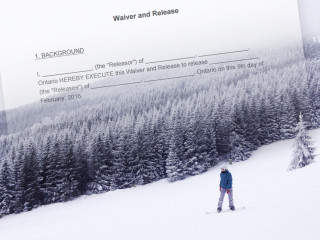Authored by Gordon Good, OTLA member and lawyer at McKenzie Lake Lawyers LLP.
This action proceeded as a judge-alone damage assessment. The impaired Defendant entered the intersection on a red light, striking the driver side of the Plaintiffs’ vehicle, containing 5 family members. The driver mother sustained lumbar fractures. The 5 month old son sustained fatal injuries.
Date Heard: Several days in February, 2018 | Full Decision [PDF]
The collision occurred October 13, 2008, prior to August 31, 2010 when the Insurance Act was amended by paragraph 267.5 (8.1.1), which eliminated the deductible for fatalities. The loss also occurred after passage of O. Reg. 221/15, which indexed the $30,000 deductible, effective for incidents occurring on or after October 1, 2003, pursuant to O. Reg. 312/03, and the Court of Appeal decision in Cobb v Long Estate, 2017 ONCA 717, holding that the indexation of the deductible was retroactive.
The Hon. Mr. Justice P. B. Hockin, at London, determined damages for the driver mother for generals, past and future loss of income, and losses for guidance, care, and companionship for the death of her son; damages for the husband for his FLA claim for the injuries to his wife and the loss of his son; and damages for the two surviving children, for their psychological injuries and FLA damages for the injuries arising from the death of their brother and the injuries to their mother.
The decision is significant for a number of findings.
- Section 4.3, O.Reg. 461/96 “evidence of one or more physicians”
The evidence as to whether the surviving brothers had sustained a permanent and serious impairment of an important psychological function was provided by a psychologist. The Court noted that the psychologist was not a physician, but was a registered member of the College of Psychologists of Ontario, and possessed wide experience. The Defendant’s position was the evidence of the assessing psychologist did not satisfy the requirement of the regulation that the plaintiff must adduce evidence from a physician.
Justice Hockin made a significant finding that the wording of the 1996 Insurance Act changes, with respect to broadening the right to sue for impairments of “mental or psychological function,” was simple, straightforward language. A psychologist is a health practitioner under section 105 of the Courts of Justice Act.
This decision made the following finding:
It is presumed that regulatory provisions are meant to work with their enabling legislation, but where they do not stand coherently with the statute, the statutory provision prevails. The language of the exception is a clear invitation to include the evidence of a psychologist if there is to be a sensible application of the language of the section. Beyond a question of statutory interpretation, in the interest of fairness and justice, the trial record should include the evidence of (the assessing psychologist). It is within the inherent jurisdiction of the court to do so to do justice between the parties. See the case of Ziebenhaus v. Bahlieda (2005), 126 O.R. (3d) 511 (C.A.)
The psychologist’s opinion was accepted as evidence satisfying the threshold.
- “Regular or usual employment”
The evidence established that, pre-collision, the mother was going to return to work. While previously working in a retail position, she had completed training to become a veterinary assistant, and had volunteered in this capacity. Justice Hockin found on the evidence that the mother had a settled intention to return to work, and would have been employed as a veterinary assistant, had the collision not occurred.
The Court concluded that, for the purpose of determining seriousness pursuant to Section 4.2 (1) 1 of the regulation (the impairment must substantially interfere with the person’s ability to continue his or her regular or usual employment), the mother’s “regular or usual employment” was employment as a veterinary assistant.
Justice Hockin concluded that, using the ordinary parlance in a vocational sense, present or recent work was not necessary to determine the regulation’s definition of employment. To exclude the mother from the definition in the regulation simply because she had paused between finishing her training and her employment to have a child:
would create problematic outcomes for any woman who intends to return to work after having a child, but who was injured in the interim period between training or employment and return to employment after taking a period of time off to raise a young child. The exclusion of such women from the scheme cannot be the intention of the scheme and is not appropriate in the circumstances. Fairness and the ordinary meaning of these words point to this interpretation and conclusion.
The Court made a finding that the DME threshold opinion that the mother could return to sedentary work was not relevant to the threshold question, as sedentary work was not her regular or usual occupation.
- Threshold
Justice Hockin carefully reviewed the provisions of the threshold and the provisions of Sections 4.1 and 4.2 of O. Reg. 381/03, amending O. Reg 461/96.
The Court reviewed Firestone J.’s decision in Valentine v. Rodriguez-Elizade, 2016 ONSC 3540, at paragraphs 17-21. This decision held that the purpose of the amended regulation does not change the interpretation to be given the statutory immunity or “threshold wording.” The purpose was to provide clarification regarding the intended meaning of the statute’s threshold wording. The correct evidentiary approach continues to be Meyer v. Bright (1993), 15 O.R. (3d) 12 (C.A.)
- Dr. Ogilvy-Harris and Dr. Benjamin Clark
The evidence established a transverse process fracture at L2 and L3 for the driver mother. Both assessors agreed there were no credibility issues in this Plaintiff’s evidence. Dr. Ogilvy-Harris referenced Statistics Canada, establishing that persons with mechanical low back pain will have more difficulty finding and keeping employment. These individuals also have an average working life expectancy loss of 5 to 10 years.
Dr. Clarke limited his opinion on the threshold issue to a “physical perspective,” which, in Dr. Ogilvy Harris’s opinion, was too narrow, stating “every person is a continuation of the physical and psyche. Dr. Clark disqualified half of the whole function.”
Dr. Clarke’s evidence that 10 or 20 physiotherapy treatments 10 years post collision might produce “partial improvement” was rejected.
- Damage assessment
Mother
General Damages $145,000
Past Income Loss $ 70,000
Future Income Loss $238,500
FLA Deceased Son $130,000Father
FLA for Spouse $ 25,000
FLA Deceased Son $130,000Each Surviving Child
FLA Mother $ 30,000
FLA Deceased Brother $ 35,000
The FLA awards assessed at less than the 2018 deductible of $18,991.67 were reduced by the amount of the deductible.
Damages, net of deductibles, totalled $773,500.
- PJI
The quantification of PJI, following the Court of Appeal decision in Cobb and the discretion available to award prejudgment interest pursuant to the provisions of section 130 (2) of the Courts of Justice Act, was reserved.
The issue of costs remains to be determined.
Allstate has filed a notice of appeal.
Read the full decision [PDF]













